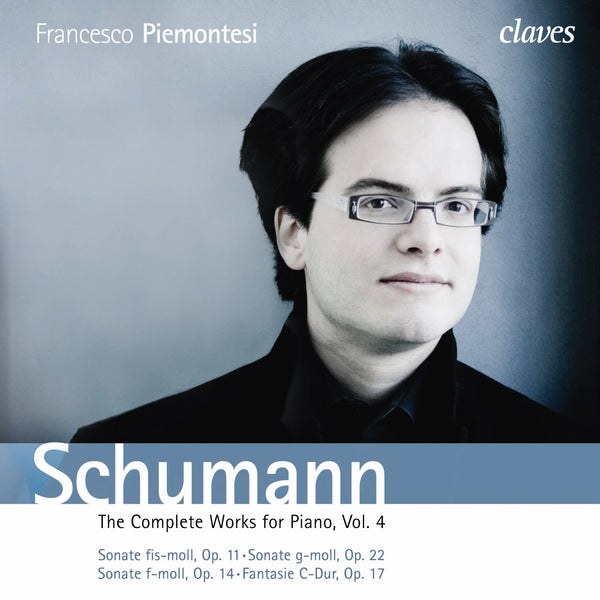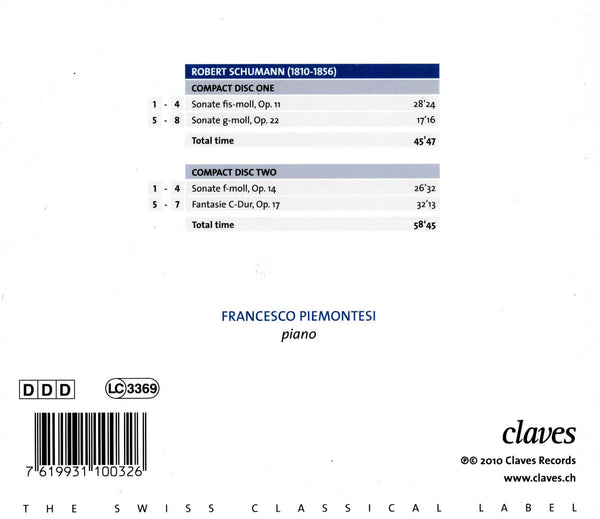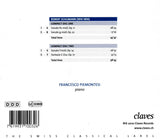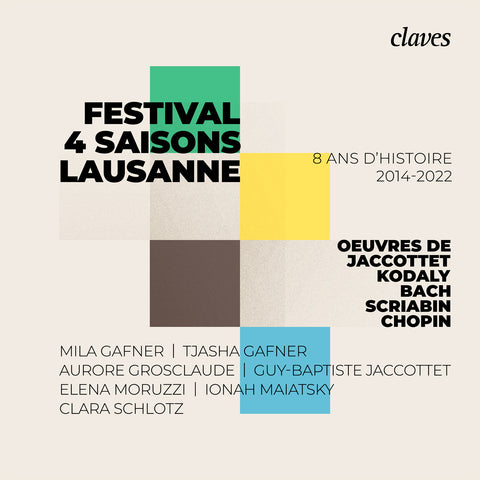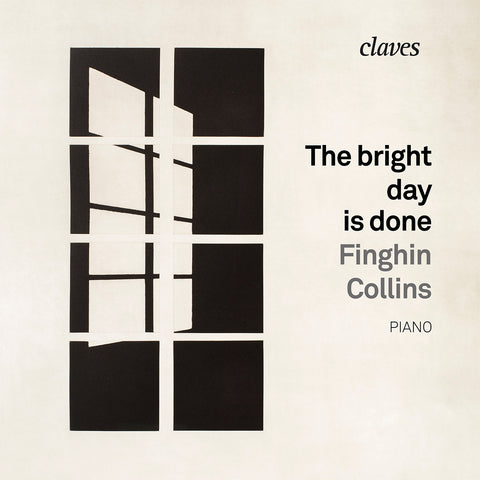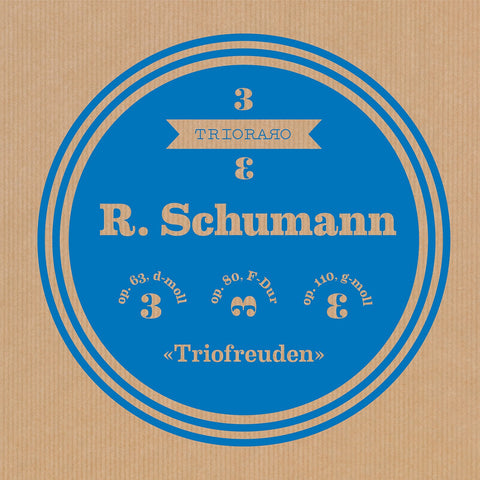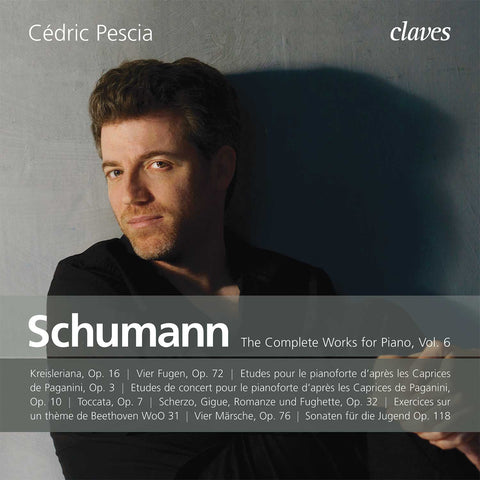(2010) Schumann: The Complete Works for Piano, Vol. 4
Catégorie(s): Piano
Instrument(s): Piano
Compositeur principal: Robert Schumann
Nb CD(s): 2
N° de catalogue:
CD 1003/04
Sortie: 04.03.2010
EAN/UPC: 7619931100326
- UPC: 191018748982
Cet album est en repressage. Précommandez-le dès maintenant à un prix spécial.
CHF 24.00
Cet album n'est plus disponible en CD.
Cet album n'est pas encore sorti. Précommandez-le dès maintenant.
CHF 24.00
Cet album n'est plus disponible en CD.
CHF 24.00
TVA incluse pour la Suisse et l'UE
Frais de port offerts
Cet album n'est plus disponible en CD.
TVA incluse pour la Suisse et l'UE
Frais de port offerts
Cet album est en repressage. Précommandez-le dès maintenant à un prix spécial.
CHF 24.00
Cet album n'est plus disponible en CD.
This album has not been released yet.
Pre-order it at a special price now.
CHF 24.00
Cet album n'est plus disponible en CD.
CHF 24.00
Cet album n'est plus disponible en CD.
SCHUMANN: THE COMPLETE WORKS FOR PIANO, VOL. 4
Also known as the “Great Sonata” and sometimes nicknamed the “Concerto without Orchestra”; it originally had five movements; brought down to four in the final 1853 edition. Besides the monumental first movement and the Presto possibile finale; the most noteworthy is the sublime and grave third movement; with a theme by Clara Wieck; who became Mrs Schumann in 1840. “What a privilege for Robert to be able to unite his song to that of his beloved!” wrote Etienne Barilier in the introductory booklet. Another highlight of this album is the Fantasia op. 17; in which the composer manages to master the great sonata form whilst still giving full rein to his unstable; wild genius.
The work is dedicated to Franz Liszt; who later returned the compliment with the Sonata in B minor. It was written in 1846 in painful circumstances: Robert was separated from Clara by the tyrannical and jealous will of her father. “The composer later confessed that the first part of the work (which originally was also to be called “sonata”); was the expression of his torn love”; says Etienne Barilier. “It is however not only issued from his love for Clara; but also from his admiration for Beethoven: Schumann had intended writing a great sonata in honour of the composer and it has indeed always been thought that the final movement of the work; with its contemplative; supra-terrestrial atmosphere; was inspired by the last movements of Beethoven's Sonatas opus 109 or 111”.
Whereas the musical world is celebrating in great style the bicentenary of Robert Schumann’s birth; Claves is pursuing the project of recording the German composer’s complete piano works. Begun in 2006 with double albums by Finghin Collins (followed two years later by his third volume) and Cedric Pescia; the fourth volume is now out: two very dense CDs by Swiss pianist Francesco Piemontesi; who chose the challenge of the Three Sonatas and the Fantasia op. 17. With great success. Of the three; it is no doubt the Third Sonata (op. 14) which is the most vertiginous – although the Second; with its first movement marked “so rasch wie möglich” then “schneller” and “noch schneller” is pretty hair-raising.
Also known as the “Great Sonata” and sometimes nicknamed the “Concerto without Orchestra”; it originally had five movements; brought down to four in the final 1853 edition. Besides the monumental first movement and the Presto possibile finale; the most noteworthy is the sublime and grave third movement; with a theme by Clara Wieck; who became Mrs Schumann in 1840. “What a privilege for Robert to be able to unite his song to that of his beloved!” wrote Etienne Barilier in the introductory booklet. Another highlight of this album is the Fantasia op. 17; in which the composer manages to master the great sonata form whilst still giving full rein to his unstable; wild genius.
The work is dedicated to Franz Liszt; who later returned the compliment with the Sonata in B minor. It was written in 1846 in painful circumstances: Robert was separated from Clara by the tyrannical and jealous will of her father. “The composer later confessed that the first part of the work (which originally was also to be called “sonata”); was the expression of his torn love”; says Etienne Barilier. “It is however not only issued from his love for Clara; but also from his admiration for Beethoven: Schumann had intended writing a great sonata in honour of the composer and it has indeed always been thought that the final movement of the work; with its contemplative; supra-terrestrial atmosphere; was inspired by the last movements of Beethoven's Sonatas opus 109 or 111”.
Return to the album | Composer(s): Robert Schumann | Main Artist: Francesco Piemontesi








